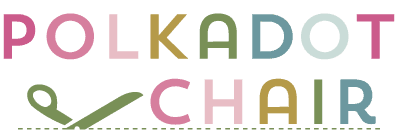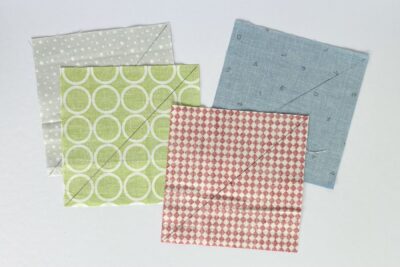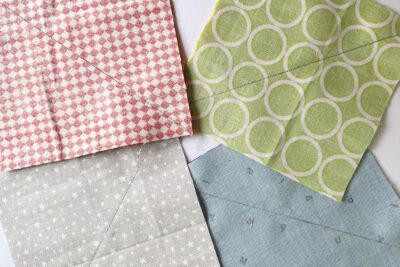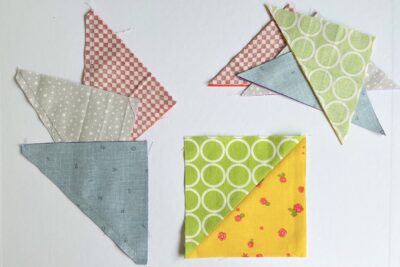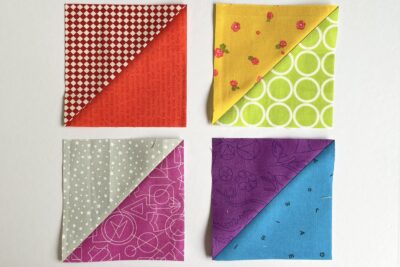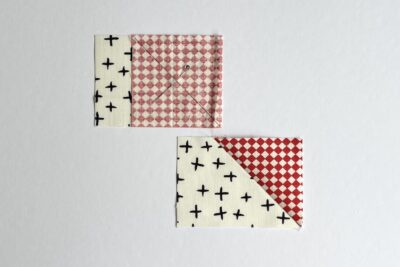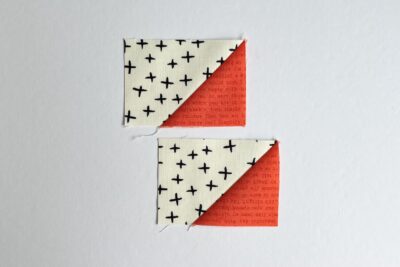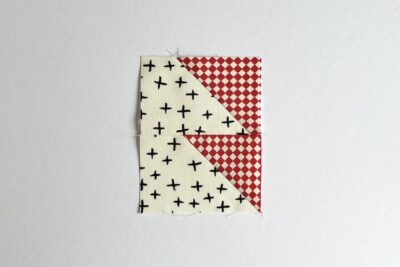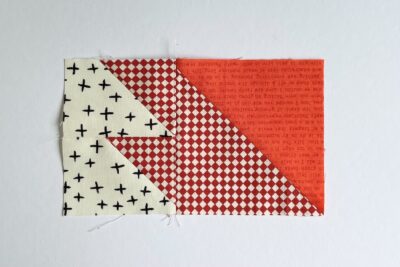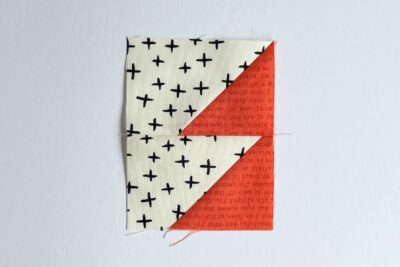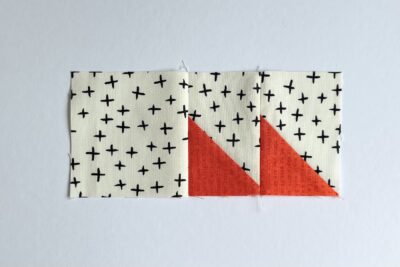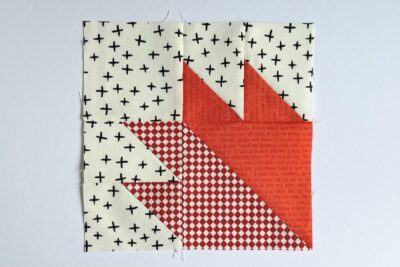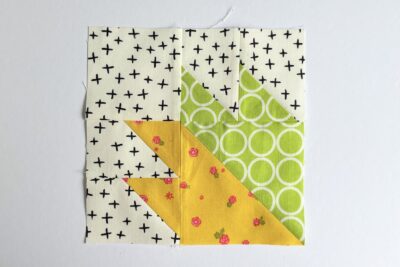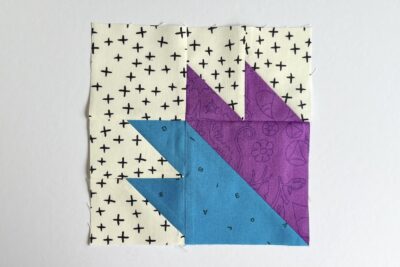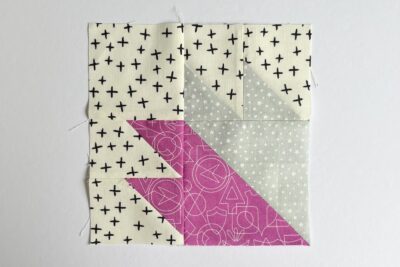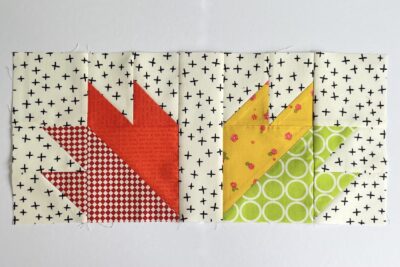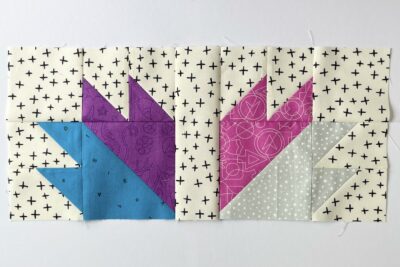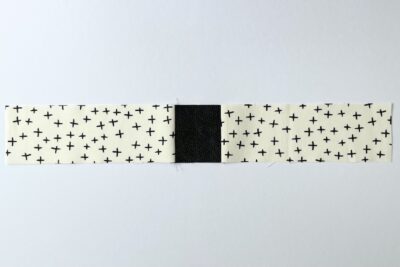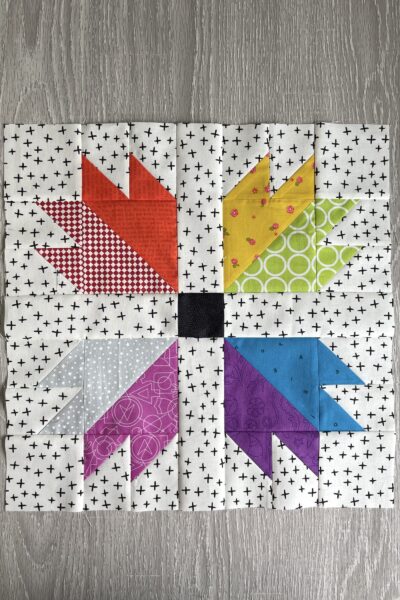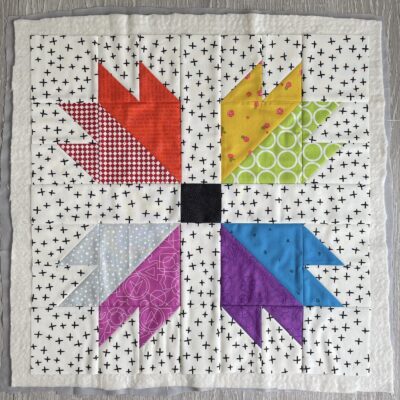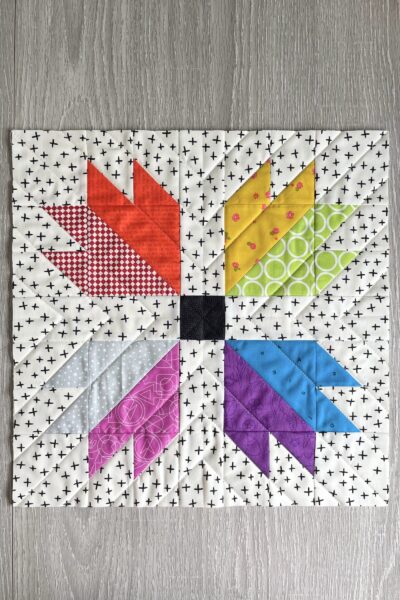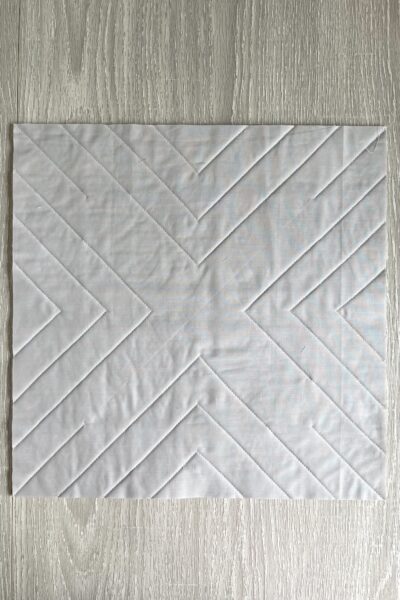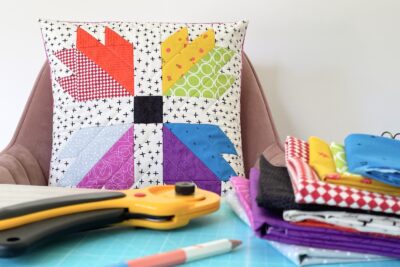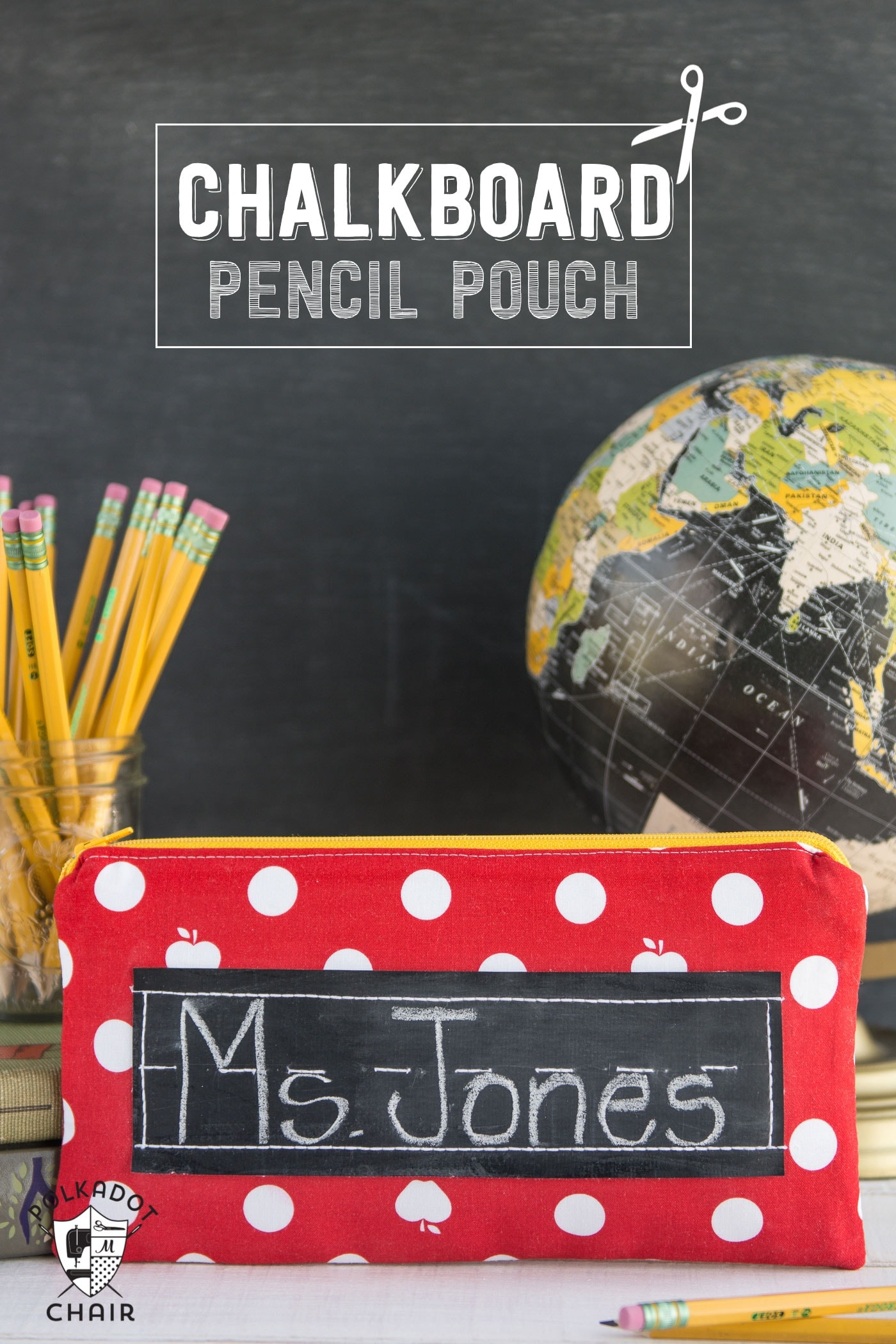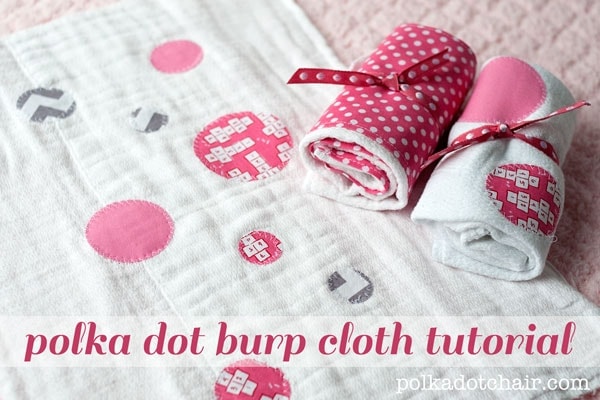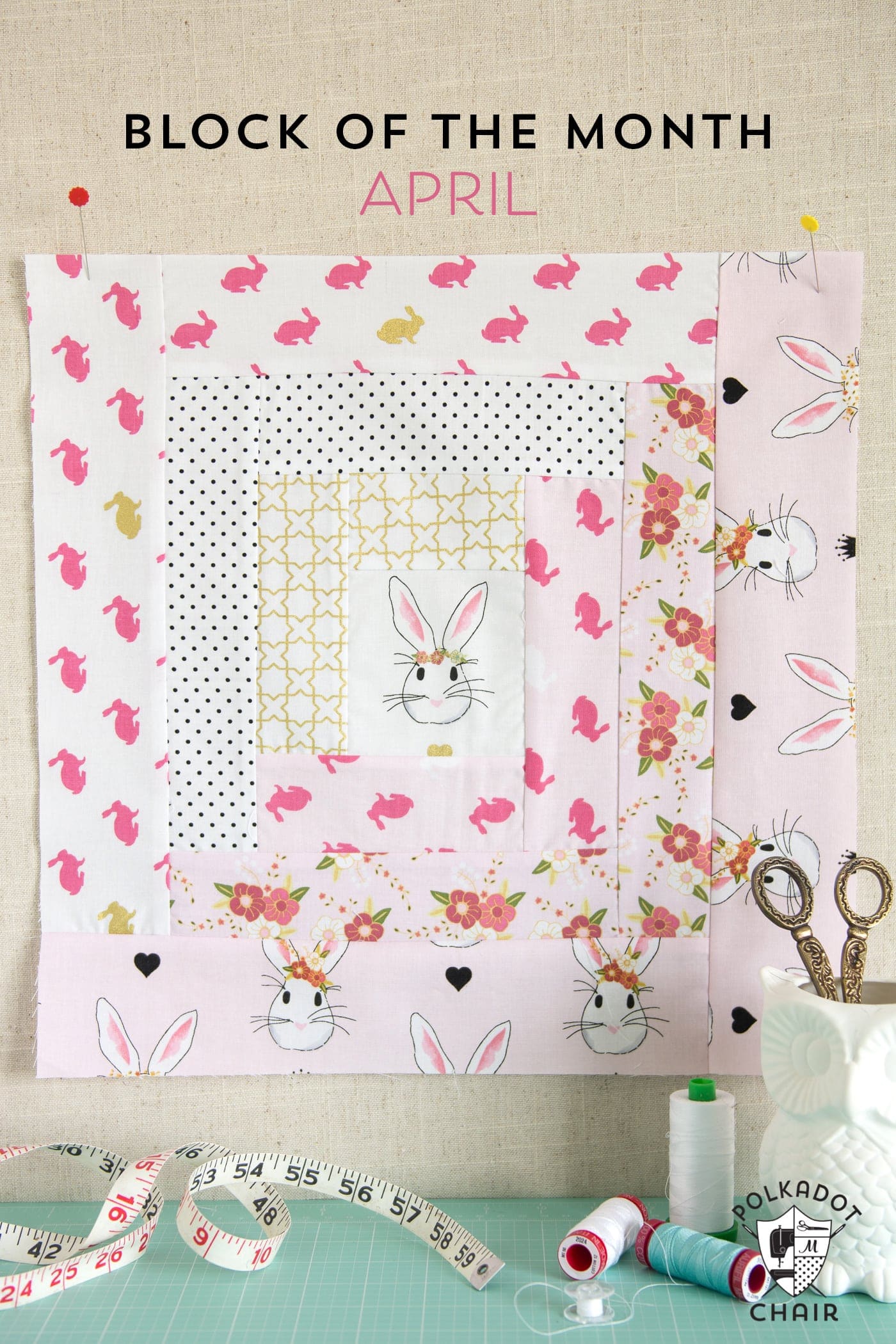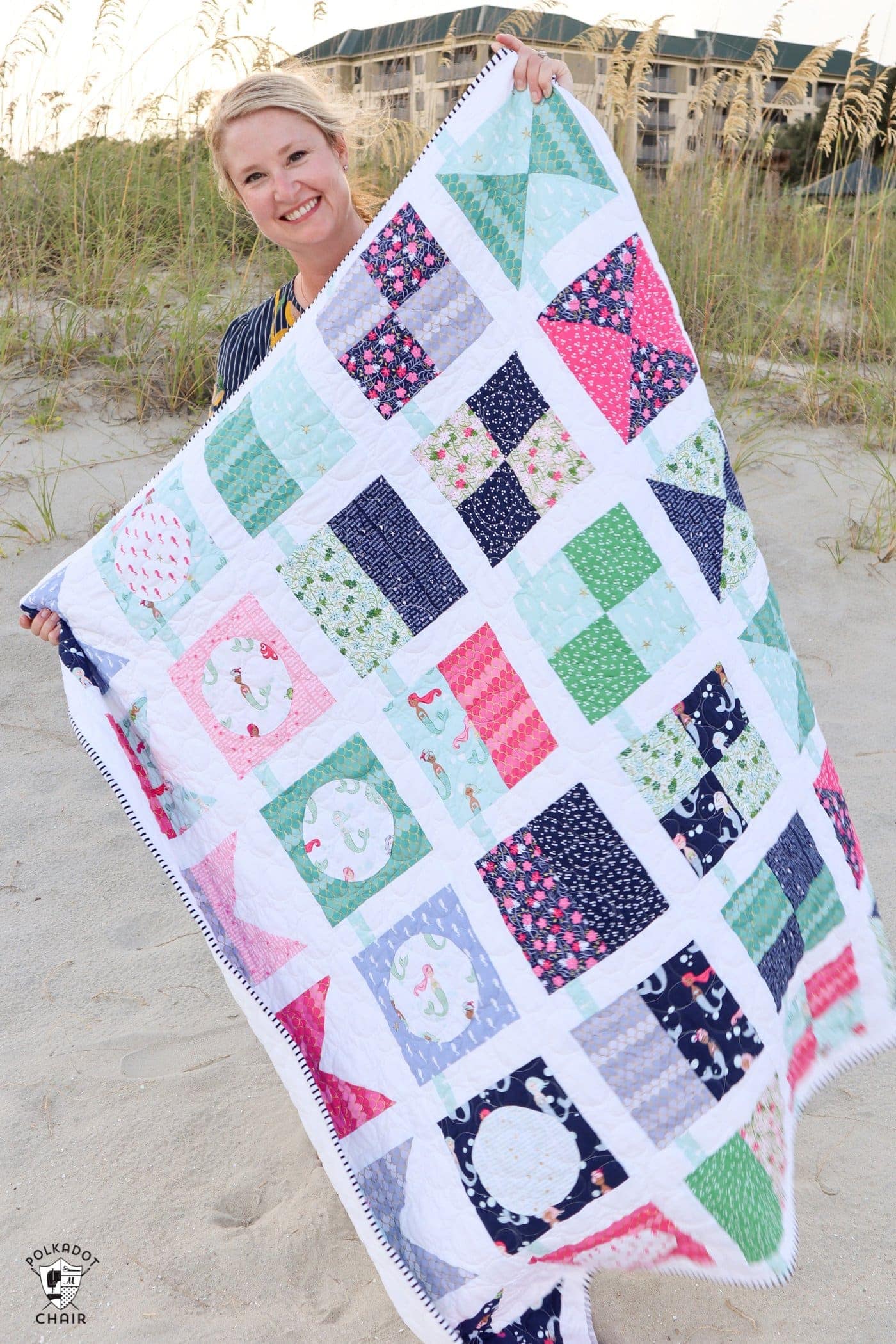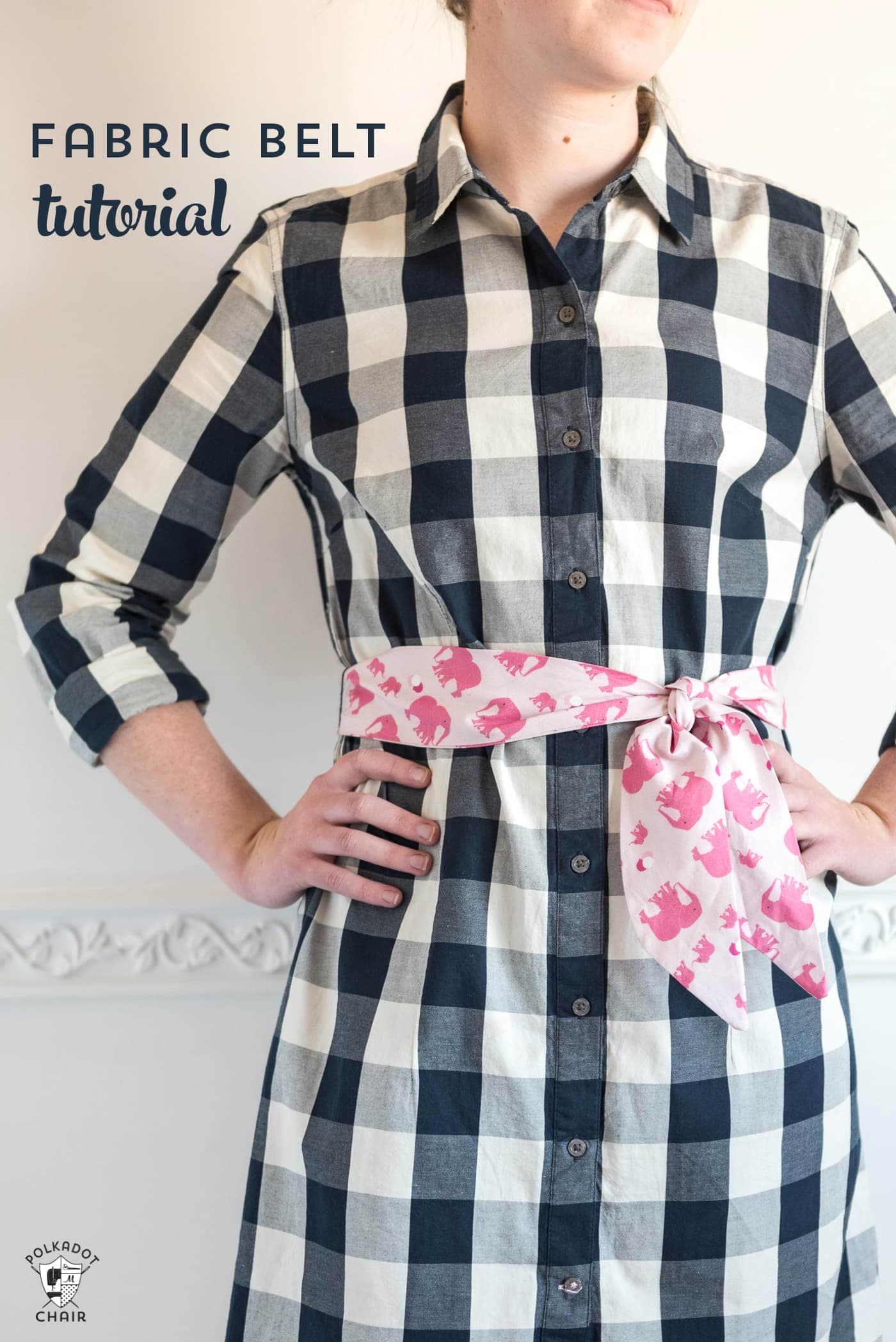Prism Paw Quilted Pillow Pattern
Create a colorful quilted pillow that is a unique twist on a bear paw quilt block with our free Prism Paw Quilted Pillow pattern. It’s our July “Pillow of the Month” pattern designed by Amy Ball.
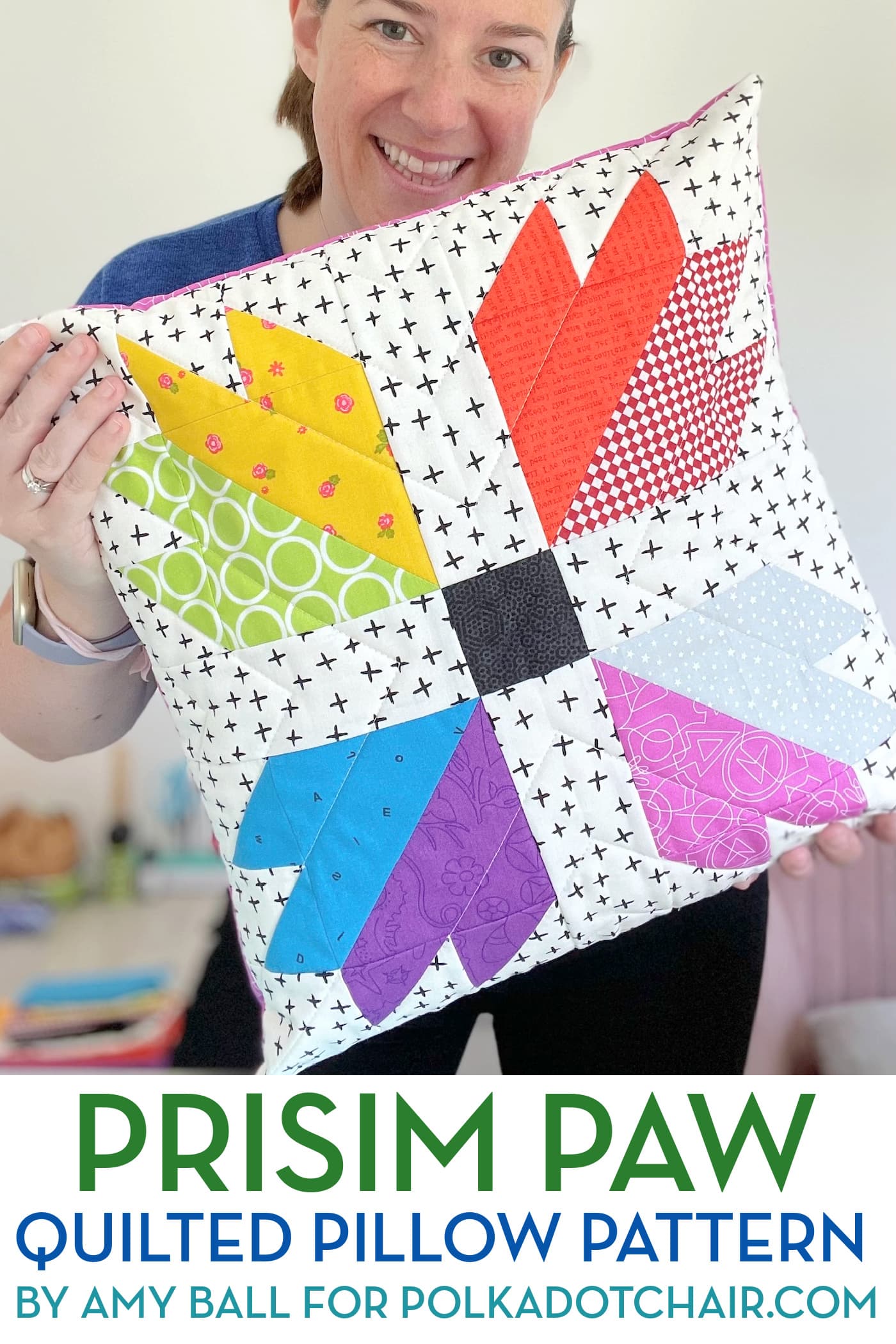
I love traditional quilt blocks and try to use them as much as possible when designing. But I do also like to add a little bit of an extra twist at times, and because they are my absolute favorite, this usually involves adding half square triangles into the classic block.
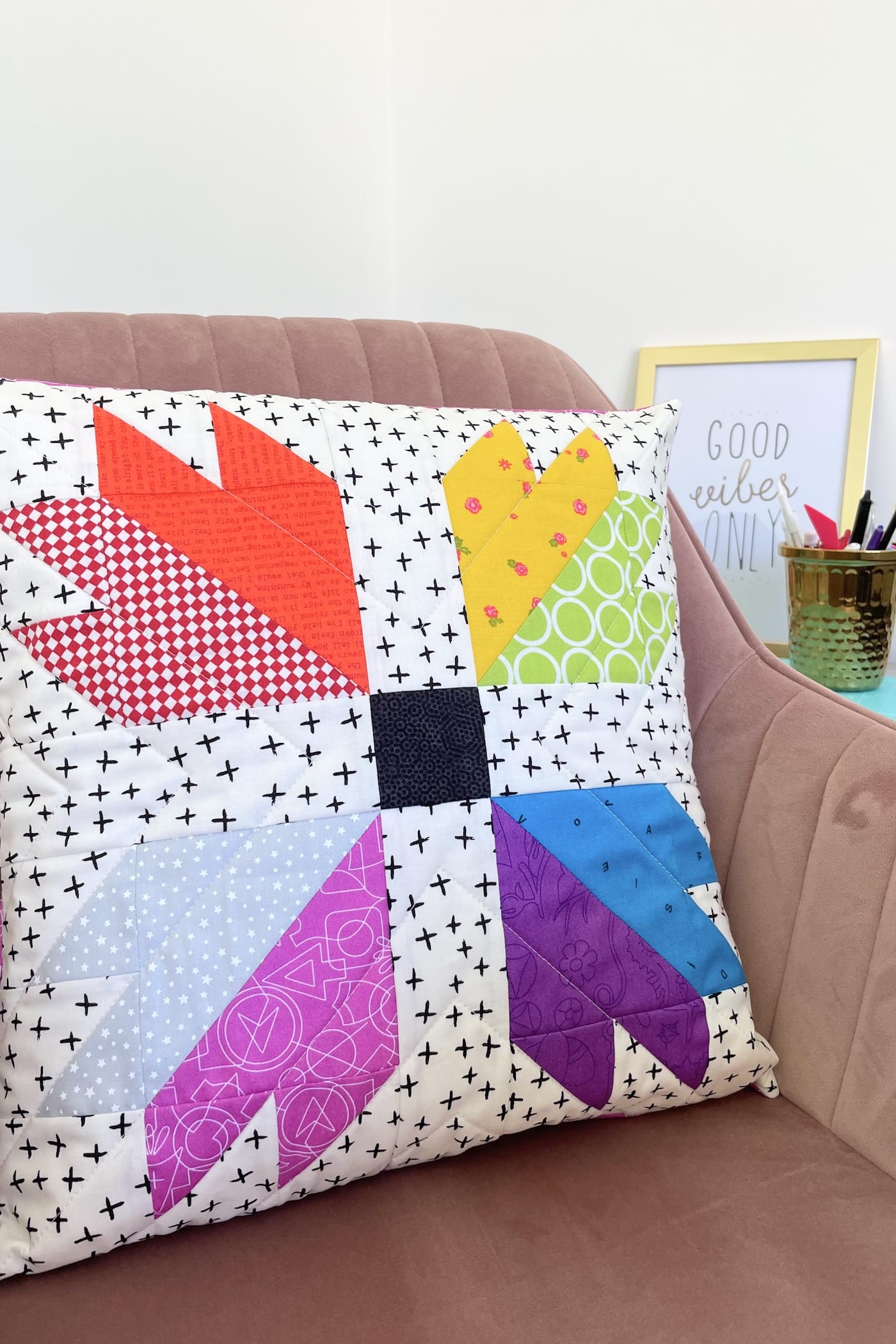
My Prism Paw is one of those designs! A traditional bear paw block with half square triangles in place of the usual central four plain squares. And a gorgeous spectrum of colors, too, for that extra modern patchwork feel.
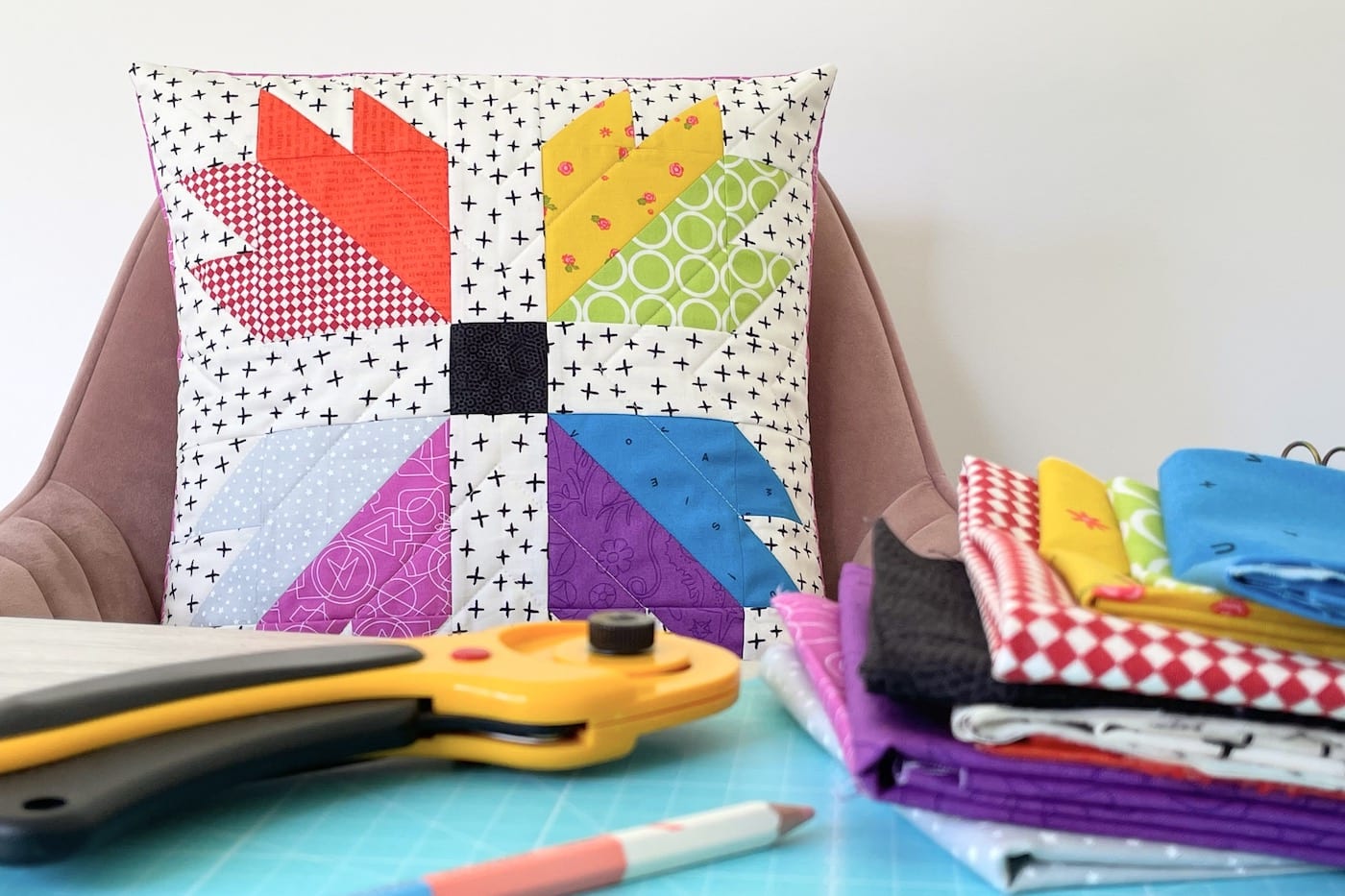
Supplies
This pillow is a very scrap-friendly pillow project. Look to your fabric stash for supplies. Since most of the fabric pieces required are less than 5″ x 5″, it would be a great way to use up leftovers from a charm pack.
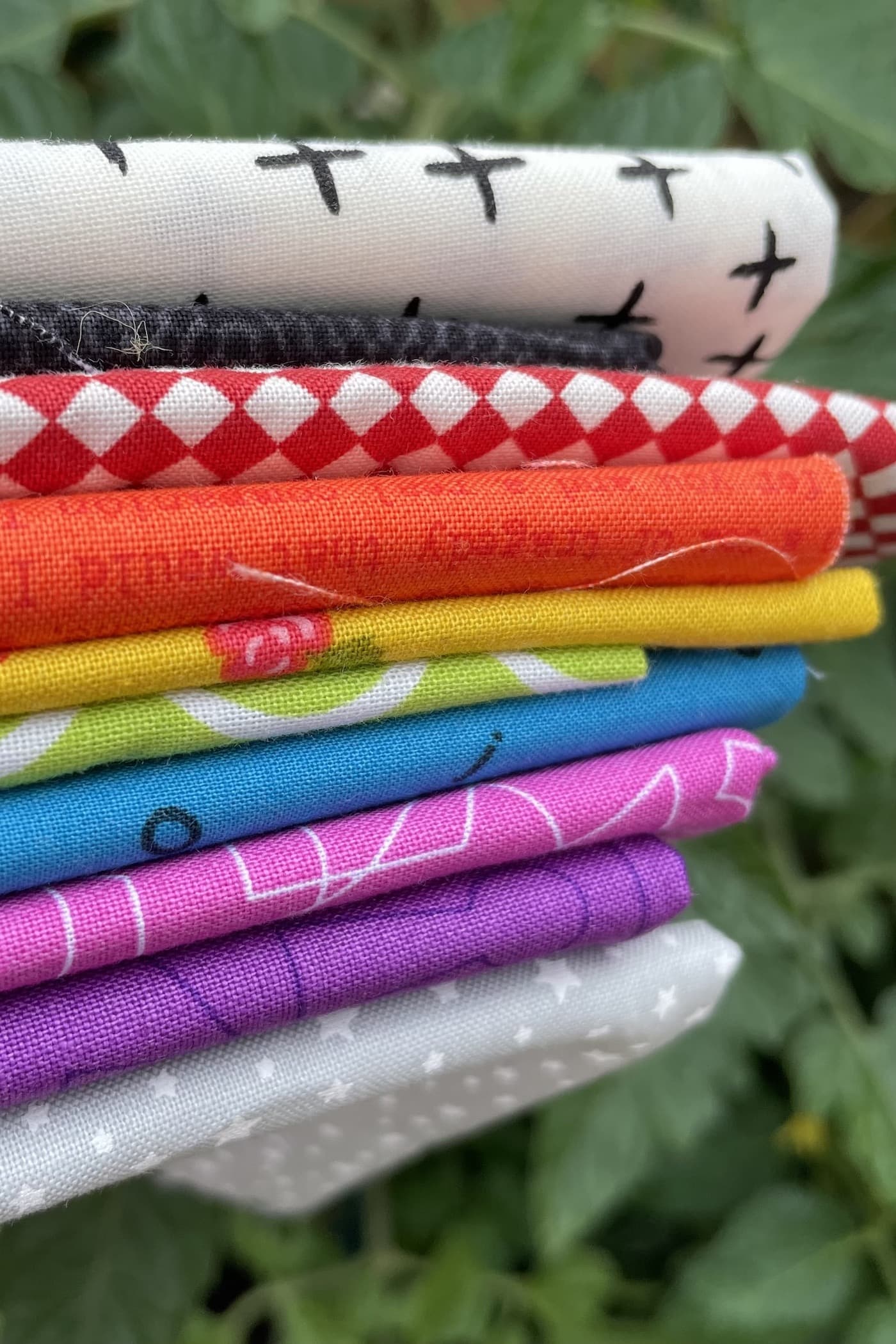
Free Pillow of the Month Patterns
Amy Ball has designed some fabulous and really fun to sew pillow patterns for our “pillow of the month” series. If you missed any previous patterns, you can find them on our site.
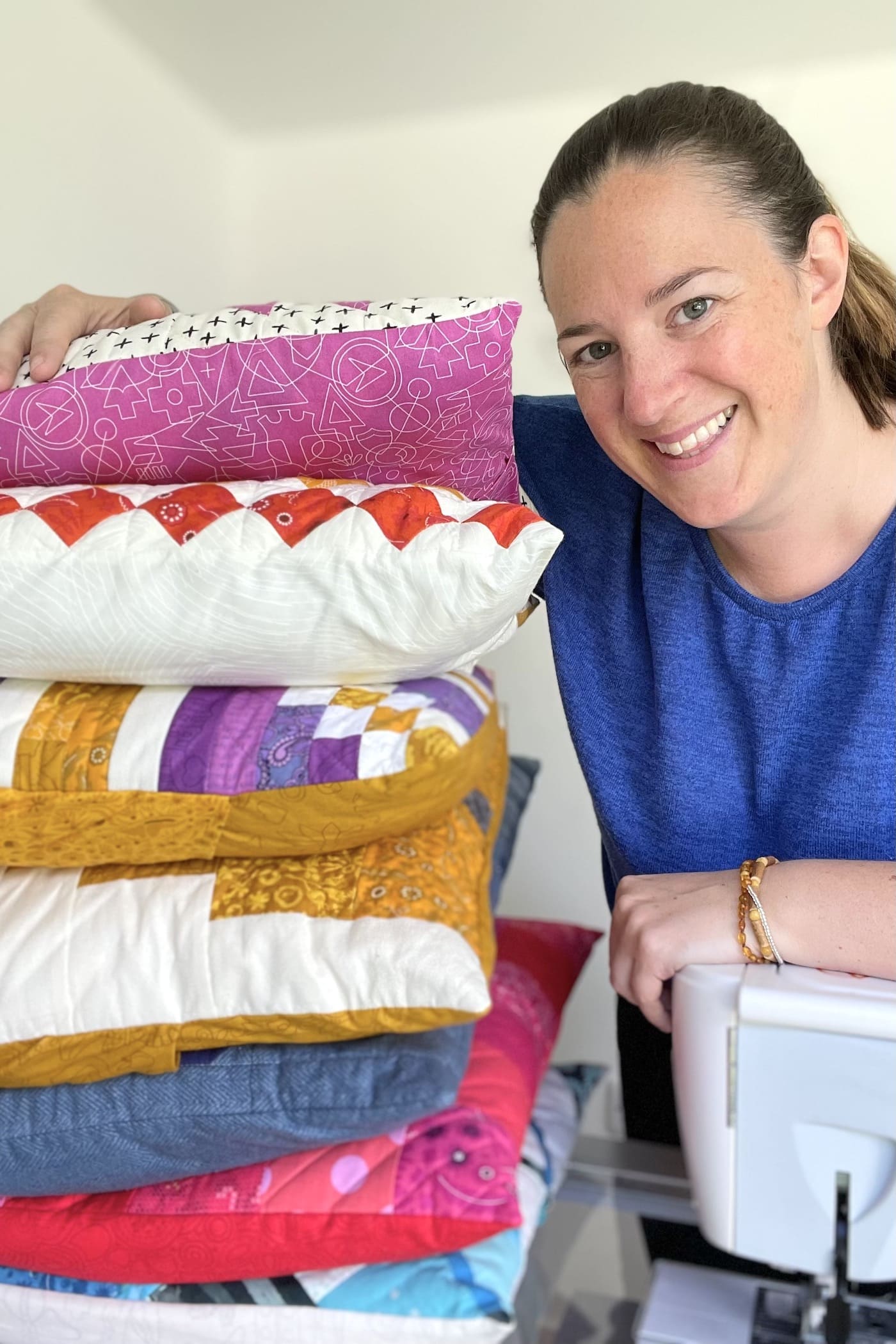
- January: Patchwork Plaid Pillow
- February: Heart Quilted Pillow
- March: SLEEP Pieced Letters Pillow Pattern
- April: Patchwork Beehive Pillow
- May: Queens Jubilee Celebration Pillow Pattern
- June: Moroccan Tiles Pillow
- July: Prism Paw Quilted Pillow Pattern
- August: Strawberry Fields Patchwork Pillow
- September: Improv Patchwork Pillow Pattern
- October: Twin Pines Quilted Pillow Pattern
- November: Peeking Reindeer Patchwork Pillow
- December: Christmas Presents Pillow
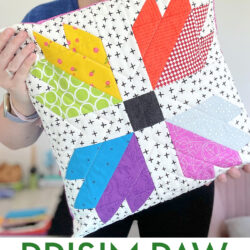
Prism Paw Quilted Pillow Pattern
Equipment
supplies
- 1 Fat Quarter Low volume fabric
- 1 piece Red fabric large scrap
- 1 piece Orange fabric large scrap
- 1 piece Yellow fabric large scrap
- 1 piece Green fabric large scrap
- 1 piece Blue fabric large scrap
- 1 piece Purple fabric large scrap
- 1 piece Pink fabric large scrap
- 1 piece Grey fabric large scrap
- 1 piece Black fabric large scrap
- 1 Fat Quarter Light backing fabric
- 1 piece Batting 19” x 19”
- 1/2 Yard
Pillow back fabric
- 1 Cushion pad: 16” x 16”
Instructions
Cutting:
- From low volume fabric cut 7½” x 2½” (4), 3½” x 2½” (16), and 3½” square (4).From red fabric cut 4¾” square (1) and 2½” square (2).From orange fabric cut 4¾” square (1) and 2½” square (2).From yellow fabric cut 4¾” square (1) and 2½” square (2).From green fabric cut 4¾” square (1) and 2½” square (2).From blue fabric cut 4¾” square (1) and 2½” square (2).From purple fabric cut 4¾” square (1) and 2½” square (2).From pink fabric cut 4¾” square (1) and 2½” square (2).From grey fabric cut 4¾” square (1) and 2½” square (2).From black fabric cut 2½” square (1).From Pillow back fabric cut 16½” x 11” (2).
Construction: Use a ¼” seam allowance unless otherwise stated.
- Draw a diagonal line on the wrong side of the red, green, blue and grey 4¾” squares.
- Pair the red 4¾” square with the orange one, pair the green 4¾” square with the yellow one, pair the blue 4¾” square with the purple one, and pair the grey 4¾” square with the pink one. Place each pair right sides together and sew along the drawn diagonal lines.
- Cut ¼” from the sewn lines and press the four half square triangles with the seams open.
- Trim the four half square triangles to 4½” square and set aside for later.
- Draw a diagonal line on the wrong side of all the 2½” squares (except the black one).
- Take one 3½” x 2½” low volume rectangle and one red 2½” square. Place them right sides together with the red square aligned to the right edge and with the drawn diagonal line running top left to bottom right. Sew along the drawn line, cut ¼” above the sewn line and press open. Repeat for the second 3½” x 2½” low volume rectangle and red 2½” square. [TOP TIP: Press the red half square triangle section open before cutting off the excess fabric. This way you can use the rectangle’s fabric underneath as a guide for accurate pressing.]
- Repeat step six using the orange 2½” squares but position the drawn diagonal lines so they run bottom left to top right. Set aside.
- Sew the red/low volume units from step six together along one long edge with both of the red half square triangles on the right side of the units with the diagonal seams running top left to bottom right.
- Now sew the unit from step eight to the 4½” red-orange half square triangle with the large HST on the right with the red section in the bottom left corner. Set aside.
- Sew the orange/low volume units from step seven together along one long edge with both of the orange half square triangles on the right side of the units with the diagonal seams running bottom left to top right.
- Now rotate the unit made in step ten so the orange half square triangles are at the bottom edge and sew it to one low volume 3½” square with the low volume square on the left.
- Sew together the two units from steps nine and eleven using the photo as a guide. Press well and set aside for later.
- Repeat steps six to twelve using the yellow and green pieces. Follow the same instructions but use yellow in place of red and green in place of orange.
- Repeat steps six to twelve using the blue and purple pieces. Follow the same instructions but use blue in place of red and purple in place of orange.
- Repeat steps six to twelve using the pink and grey pieces. Follow the same instructions but use pink in place of red and grey in place of orange.
- Take the red-orange block and the yellow-green block and sew together with one 7½” x 2½” low volume rectangle in the centre. Use the photo as a guide for the orientation of the two blocks.
- Take the blue-purple block and the pink-grey block and sew together with one 7½” x 2½” low volume rectangle in the centre. Use the photo as a guide for the orientation of the two blocks.
- Take the remaining two 7½” x 2½” low volume rectangles and sew together with the 2½” black square in the centre.
- Sew the three rows together, using the photo as a guide for the orientation, and press well.
Quilting:
- Now it’s time to make a quilt sandwich. Place your light backing fabric square (right side facing down) with your batting on top, then add the patchwork pillow front with the right side facing towards you. Make sure all the layers are smooth and flat, then baste the layers together using your preferred method.
- Quilt as desired. I have used straight line quilting in cream to coordinate with the pillow front background fabric in diagonal lines that echo the lines of the colored half square triangle seams Other quilting ideas: hand quilting around all the colored block edges or free motion quilting in coordinating thread colors inside each colored section.
- Once you have finished quilting, trim off excess backing fabric and batting, and square up your pillow block if required.
Finishing:
- Take one pillow back 16½” x 11” rectangle and hem one long edge by pressing the raw edge to the wrong side by ¼” then again by another ¼”. Press well and sew. Then repeat for the second pillow back 16½” x 11” rectangle.
- Pin or clip the pillow back pieces to the quilted block, right sides together, all around the four side.
- Sew around all four edges using a ¼” seam allowance, securing the start and finish with some back-stitching.
- Trim the corners, turn the pillow cover the right way out, carefully poke out the four corners and then press.
- Stuff with an 16” square pad and enjoy your new Prism Paw pillow.
About the Designer
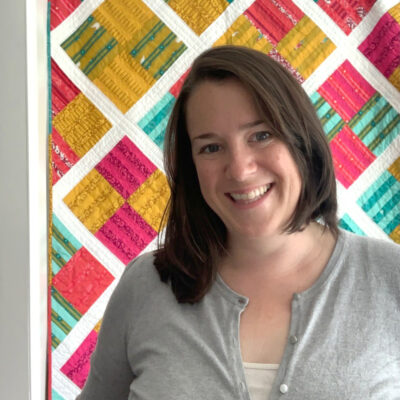
Amy lives in the north of England with her husband and son. When she’s not sewing and quilting, Amy can usually be found baking or reading. You can find her on Instagram @amyatthegate
Also by Amy
Quilting is Tough | Overcoming quilting fatigue
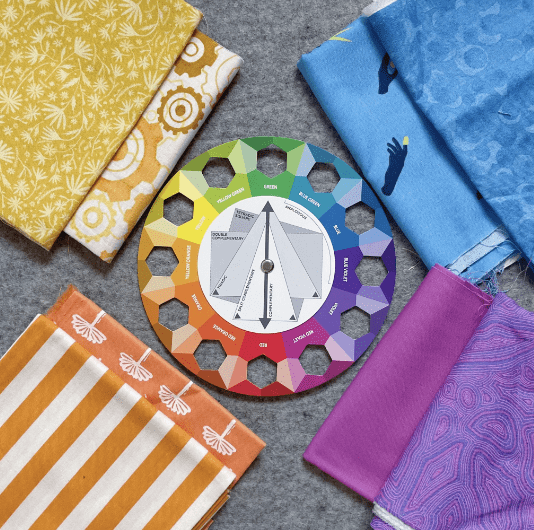
Choosing Fabric Colours | Four, Five & More Colours

Seams Perfect: Online course – create spot-on patchwork seams with precision and confidence.
